How to operate a double-shaft shredder?
How to operate a double-shaft shredder?
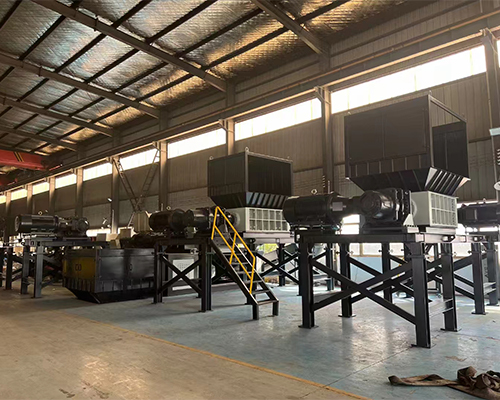
When operating a double-shaft shredder, it is important to ensure that you follow the specific instructions and safety specifications provided by the manufacturer. The following are the correct operating steps and precautions in general:
Preparation before operation
Inspect the equipment: Before starting, be sure to conduct a comprehensive inspection of the shredder, including key components such as the transmission system, working device, brakes, etc., to ensure that they are in good condition and that the necessary protective covers are installed.
Cleaning and lubrication: Add lubricating oil to the wear and rolling parts such as the large gear ring and runway to ensure that all moving parts are properly lubricated; at the same time, clean up the materials or debris that may be left after the last operation.
Start and run
Turn on the power: Turn on the power of the shredder, press the switch, and observe whether the machine starts normally and runs smoothly.
Monitor the ammeter: After starting, check the changes in the ammeter pointer immediately, and confirm that there are no abnormal fluctuations before gradually supplying the material.
Uniform feeding: Put the material to be shredded flat and neatly into the feed port, and control the feed speed to keep it uniform. Make sure that the feed size meets the requirements of the shredder, and avoid the entry of materials that are too large or too small, so as not to affect the crushing effect or damage the equipment.
Continuous monitoring: During the shredding process, the machine's operating status should be checked frequently, and attention should be paid to whether there is abnormal noise or severe vibration. If any problems are found, the machine should be stopped for inspection in time.
Adjust the load: Adjust the feed amount in time according to actual needs and machine performance to ensure reasonable load and prevent overload operation.
Safety measures
Dangerous behavior is prohibited: Do not climb on the shredding equipment during the shredding process, and do not open the belt protection cover during normal operation to prevent accidents.
Emergency stop: When encountering abnormal conditions during work (such as hearing abnormal sounds or feeling strong vibrations), immediately stop feeding materials, cut off the power supply, and press the emergency stop switch. Wait for the rotor to stop rotating completely before troubleshooting.
Direct contact with materials is prohibited: It is strictly forbidden to use hands or tools to reach into the mixing drum to scrape and discharge materials, or to work or walk under it.
End of operation
Take out the finished product: After shredding, take out the shredded materials and check whether the shredding effect meets the requirements.
Cleaning equipment: After completing the shredding task, thoroughly clean the residual materials inside the equipment, keep the shredder clean, and prepare for the next use.
Precautions
Make sure all operators are fully trained and familiar with the operation and safety rules of the equipment.
Comply with local laws and regulations regarding environmental protection and properly dispose of waste generated by shredding.
Maintain the shredder regularly and replace consumable parts such as blades at the manufacturer's recommended intervals.
Always refer to the manual or guide that comes with the specific model of dual-shaft shredder you are using, as there may be differences between different brands and models. If you are unsure, contact the manufacturer's technical support team for assistance.
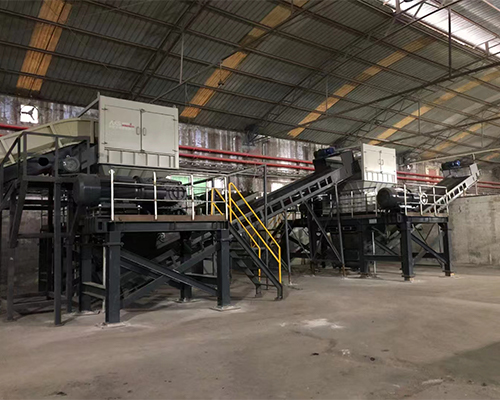
| Model | 600 | 800 | 1000 | 1200 | 1400 | 1600 | 1800 |
| Motor(kw) | 11*2 | 18.5*2 | 35*2 | 45*2 | 55*2 | 75*2 | 110*2 |
Reducer | P6-P7 | P7-P8 | P8-P10 | P10-P12 | P11-P13 | P12-P16 | P14-P16 |
| Siemens or other motors, planetary reducers or other reducers can be customized according to customer requirements | |||||||
| Rotation Speed | 8-20rmp | 8-20rmp | 8-15rmp | 8-15rmp | 8-15rmp | 8-12rmp | 8-12rmp |
| Blades Diameter | 220-320 | 260-320 | 260-400 | 400-500 | 400-500 | 500 | 500 |
| Blades material | The material of the blades (55sicr, 5crsi, 9crsi, skd11, m6v, h13) can be customizedaccording to the customer's actual usage | ||||||
| Feeding Size | 1200*900mm | 1400*1000mm | 1600*1200mm | 1800*1300mm | 2000*1300mm | 2200*1700mm | 2400*2000mm |
| The size and appearance of the feeding hopper can be customized according to thecustomer's feeding situation | |||||||
| Weight(kg) | 1800 | 2500 | 3700 | 5500 | 7500 | 9500 | 13000 |
-
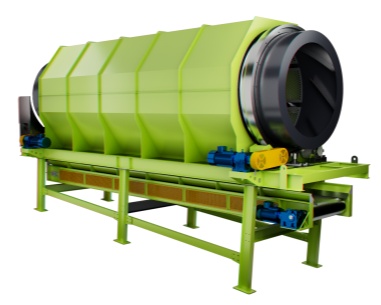 Trommel screenTrommel screen, also known as drum screens, are widely used in various industries for sorting and separating materials.Get Quote
Trommel screenTrommel screen, also known as drum screens, are widely used in various industries for sorting and separating materials.Get Quote -
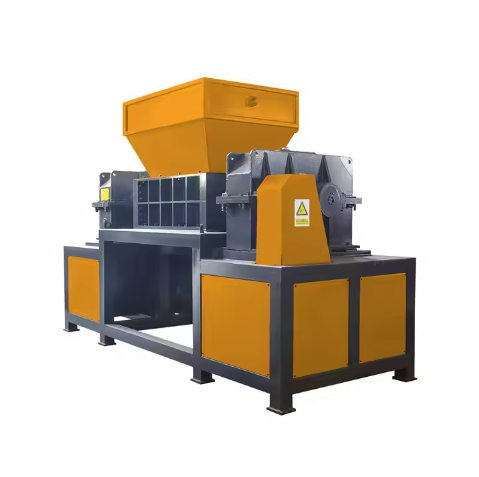 Crop straw double shaft shreddApplications:Biomass Energy Production: Shredded straw can be used as a feedstock for bioenergy plants to produce electricity or heat.Livestock Feed: Reduced-si...Get Quote
Crop straw double shaft shreddApplications:Biomass Energy Production: Shredded straw can be used as a feedstock for bioenergy plants to produce electricity or heat.Livestock Feed: Reduced-si...Get Quote -
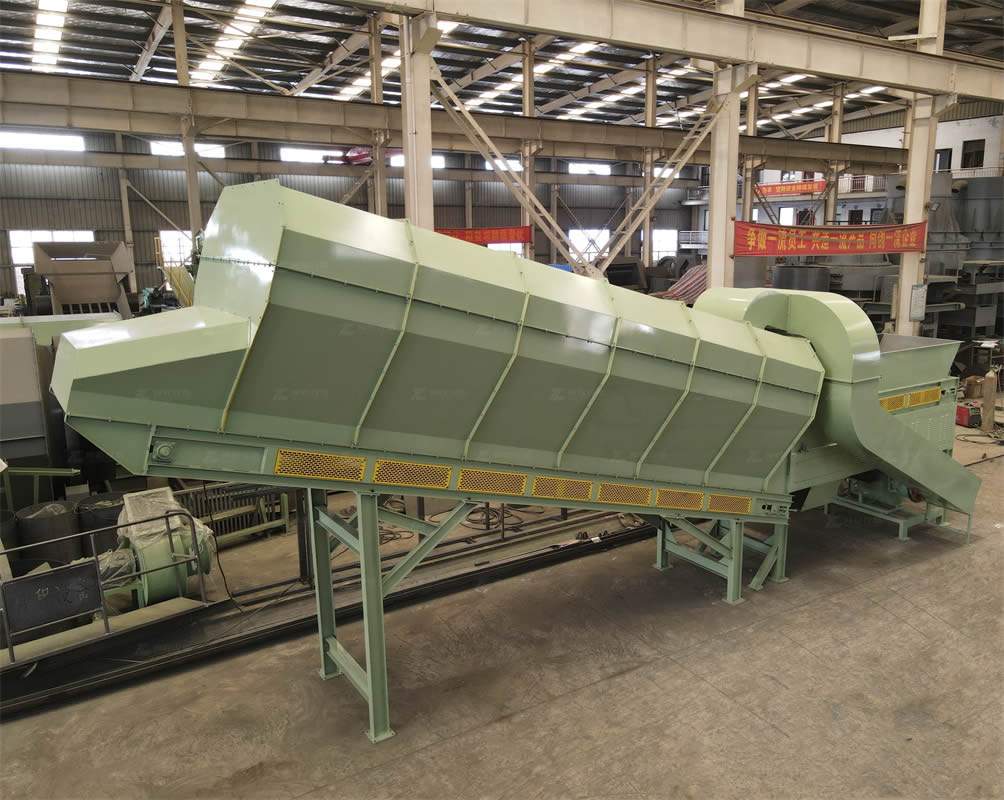 Zhongcheng Air Drum SeparatorAir drum separators effectively separate lightweight materials (e.g., plastics, paper) from heavier materials (e.g., metals, glass). This high efficiency is cru...Get Quote
Zhongcheng Air Drum SeparatorAir drum separators effectively separate lightweight materials (e.g., plastics, paper) from heavier materials (e.g., metals, glass). This high efficiency is cru...Get Quote
-
2023-01-12Waste FeederWaste feeder was specially designed to optimize municipal solid waste sorting systems. The Drum Feeder ensures that your sorting system, baler or shredder has a...
-
2024-06-08Solutions for Jaw Crusher ProblemsJaw crusher is widely used in mining, smelting, building materials, highways, railways, water conservancy and chemical industries. The maximum compressive stren...
-
2024-08-07Efficient Material Separation with Bounce ScreensThe ballistic separator is an important equipment with separation function designed for the sorting of inorganic particles in the coarsely crushed waste.
-
2024-08-28Scrap rubber product shredderThe shredder of waste rubber products not only helps to reduce environmental pollution, but also improves the reuse rate of waste rubber, which is one of the im...
-
2024-08-12Wood Pallet ShredderConsiderations When Choosing a Wood Pallet Shredder:Material Type: Different wood types may require specific configurations or materials of construction.Output ...



